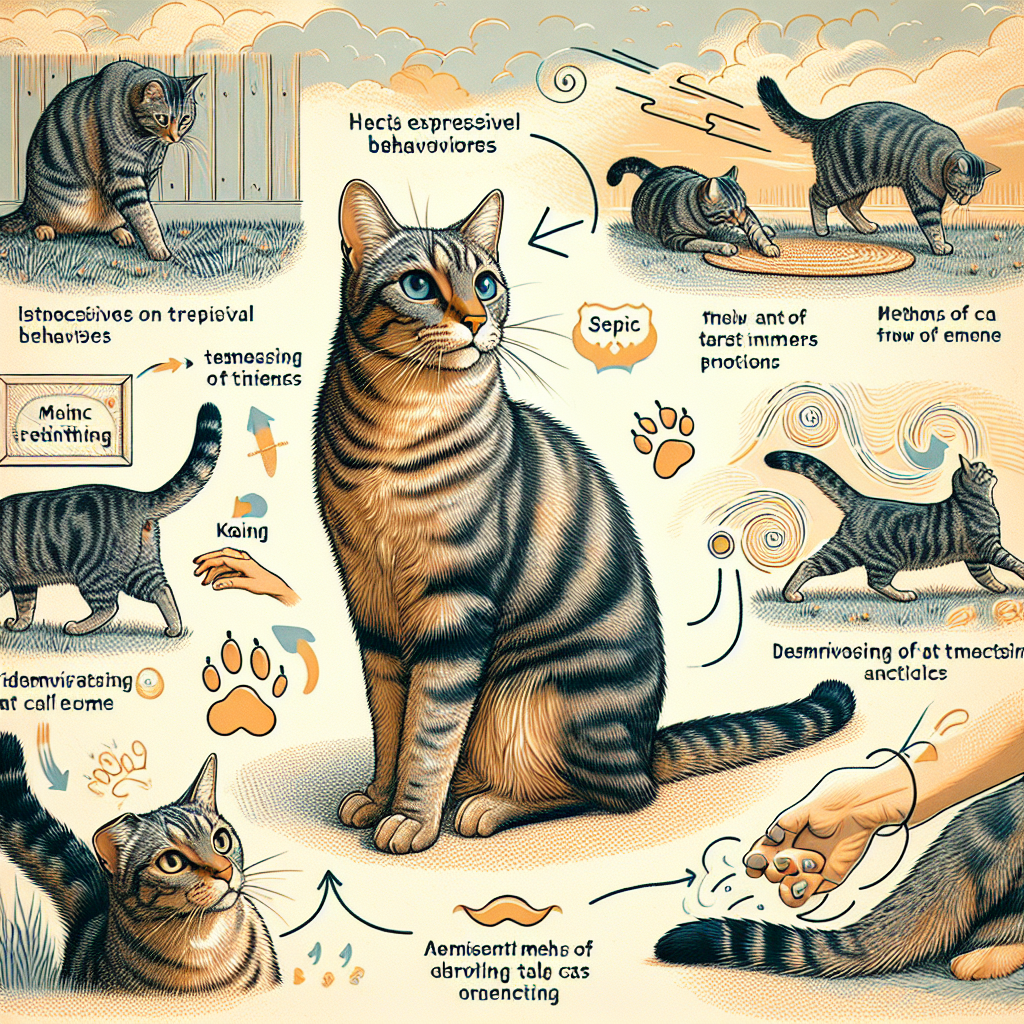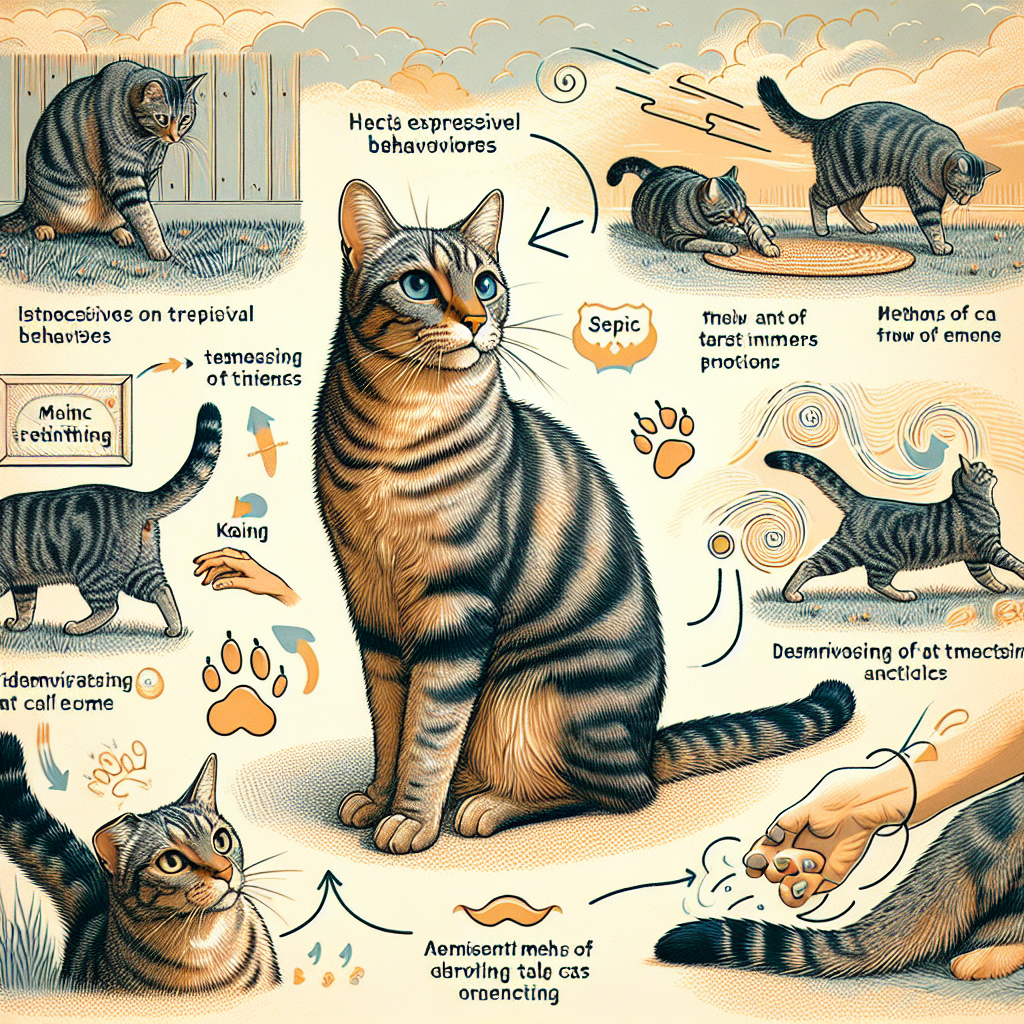Have you ever wondered why tabby cats display certain behaviors? In this article, we will explore the fascinating world of tabby cats, delving into their behavioral patterns and shedding light on whether or not they have aggressive tendencies. Whether you own a tabby cat or are simply curious about feline behavior, this article aims to provide you with valuable insights and a better understanding of our furry friends.
Understanding the Behavior of Tabby Cats
Tabby cats are known for their distinctive coat patterns, characterized by stripes, spots, or swirls, often in shades of brown, gray, or orange. But their behavior is just as unique as their appearance. In this article, we will delve into the various aspects of tabby cat behavior, including their physical characteristics, temperament, aggression, factors influencing their behavior, types of behaviors they exhibit, communication methods, playful tendencies, territorial instincts, social behavior, and reproductive behavior. So, let’s take a closer look at these fascinating feline friends!

Physical Characteristics of Tabby Cats
Tabby cats come in various shapes and sizes, just like any other feline. However, what sets them apart is their striking coat patterns. Their fur can have distinct stripes that run vertically along their body or circular patterns known as “bullseye” tabbies. Some tabbies even showcase a marbled pattern resembling the swirled patterns found in nature. These unique coat designs make tabbies visually captivating and easily recognizable.
Temperament of Tabby Cats
When it comes to temperament, tabby cats are often known for their friendly and sociable nature. They are generally very affectionate towards their human companions and thrive on human interaction. Tabby cats are known to be intelligent, curious, and playful. They have a reputation for being adaptable and tend to get along well with other pets and children, making them a popular choice for families. However, it’s essential to remember that each cat has its own unique personality, and individual differences can occur even within the same breed.
Aggression in Tabby Cats
While tabby cats are generally not known for being aggressive, it’s important to recognize that aggression can occur in any cat, regardless of its breed. Aggression in tabby cats can be a result of various factors, such as fear, resource guarding, or even underlying health issues. It’s crucial to provide a safe and secure environment for tabbies, with plenty of mental stimulation and proper socialization to minimize the likelihood of aggressive behavior.
Factors Influencing Tabby Cat Behavior
To truly understand a tabby cat’s behavior, we must consider the factors that influence it. One significant factor is their early socialization and experiences during their formative weeks. Cats that were properly socialized as kittens tend to exhibit more confident and friendly behavior. Additionally, genetics play a role in determining a cat’s behavior, as certain traits may be more prevalent in specific bloodlines. Finally, environmental factors, such as living conditions, availability of resources, and interactions with humans and other animals, all shape a tabby cat’s behavior.

Types of Tabby Cat Behaviors
Like any living being, tabby cats exhibit a range of behaviors. Understanding these behaviors can help create a harmonious relationship between humans and their feline companions. Some common behavior types observed in tabbies include grooming, hunting, exploring, playing, territorial marking, meowing, purring, and more. Each behavior serves a purpose for the cat, be it essential for survival or simply a means to communicate and express their needs or emotions.
Communication of Tabby Cats
Tabby cats, like all cats, communicate through a combination of vocalizations, body language, and scent marking. Meowing, purring, hissing, chirping, and growling are their primary vocalizations. Each sound conveys different messages, such as hunger, contentment, fear, or aggression. Body language, such as tail position, ear position, and facial expressions, also play a vital role in communication. Additionally, cats use scent marking to establish territories and communicate with other cats through their urine, feces, and scratching.
Playful Behavior in Tabby Cats
Tabby cats are well-known for their playful nature. They possess a natural instinct to pounce, stalk, and chase objects, mimicking hunting behaviors. Toys, interactive play sessions, and access to vertical spaces, such as cat trees, can help fulfill their need for mental and physical stimulation. Playing not only provides entertainment but also strengthens the bond between cats and their human companions.
Territorial Behavior in Tabby Cats
One behavior commonly observed in tabby cats is territorial marking. By scratching surfaces, rubbing against objects, or urine spraying, cats leave scent markings to establish their territory and communicate with other cats. It’s important to provide appropriate scratching surfaces and litter boxes to prevent destructive scratching or inappropriate elimination. By creating a secure and stimulating environment, cat owners can reduce stress-related territorial behaviors.
Social Behavior in Tabby Cats
Tabby cats, like many domestic cats, exhibit varying degrees of social behavior. While some may prefer solitude and independence, others thrive on social interaction with humans and other animals. Proper socialization during the kitten stage and positive experiences with humans and other pets can shape their social behavior. Understanding and respecting a tabby cat’s social preferences is essential to ensure their well-being and happiness.
Reproductive Behavior of Tabby Cats
Tabby cats, like all felines, have reproductive behaviors unique to their species. Females, known as queens, go into heat, typically during the spring and summer months, signaling their readiness to mate. They may exhibit behaviors such as increased vocalization, rubbing against objects, and restlessness. Male tabby cats, known as toms, may display aggressive behaviors or become more vocal during mating season. Responsible pet owners should consider spaying or neutering their tabby cats to prevent unwanted litters and contribute to population control efforts.
In conclusion, understanding the behavior of tabby cats allows us to foster a deeper connection and provide them with suitable environments that meet their unique needs. By considering their physical characteristics, temperament, aggression tendencies, factors influencing behavior, various behavior types, communication methods, playfulness, territorial instincts, social behavior, and reproductive behaviors, we can ensure the well-being and happiness of these beloved feline companions. So seize the opportunity and unravel the mysteries of your tabby cat’s behavior – you’re in for a fascinating journey!

